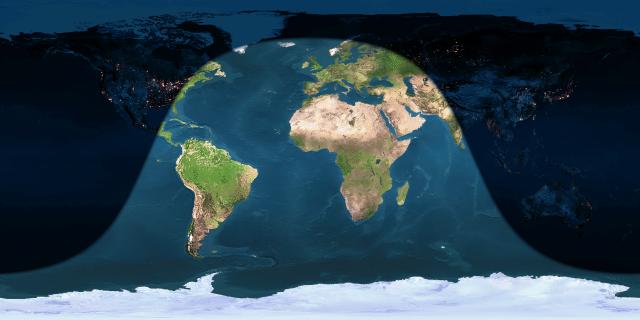Winter solstice: shortest day of the year.

The sun passes through the stones after rising at the ancient stone circle of Stonehenge, in southern England, on the annual Winter Solstice. (AP Photo/Matt Dunham)
Winter may just be getting started, but those looking forward to a bit more daylight have not much longer to wait. Today is the winter solstice in the Northern Hemisphere, marking our shortest daylight period and longest night of the year.At 12:11 p.m. EST on December 21, the sun appears directly overhead along the Tropic of Capricorn, at 23.5 degrees south latitude. With the Earth’s north pole at its maximum tilt from the sun, locations north of the equator see the sun follow its lowest and shortest arc across the southern sky. For the next six months, the days again grow longer as the sun spends more time above the horizon.
All locations on Earth see the sun rise and set at its southernmost point along the horizon on the December solstice. This also holds true in the Southern Hemisphere, where the sun takes its longest and highest path across the northern sky.
If you don’t like the cold, and live in the northern hemisphere, the good news is whatever the rest of winter brings, daylight is once again on the upswing.
Washington Post article from HERE
 Earth View view for today, 21 Dec 2013
Earth View view for today, 21 Dec 2013
 Earth View view for Jun 21, (Summer solstice)
Earth View view for Jun 21, (Summer solstice)
 Earth View view for Sep and Mar 21 (Equinoxes)
Earth View view for Sep and Mar 21 (Equinoxes)
 Last day of the year. 2014 starts tomorrow. For some reason I think I will tend to write 2114 instead of 2014 (or 2013)
Last day of the year. 2014 starts tomorrow. For some reason I think I will tend to write 2114 instead of 2014 (or 2013)







 Earth View
Earth View




